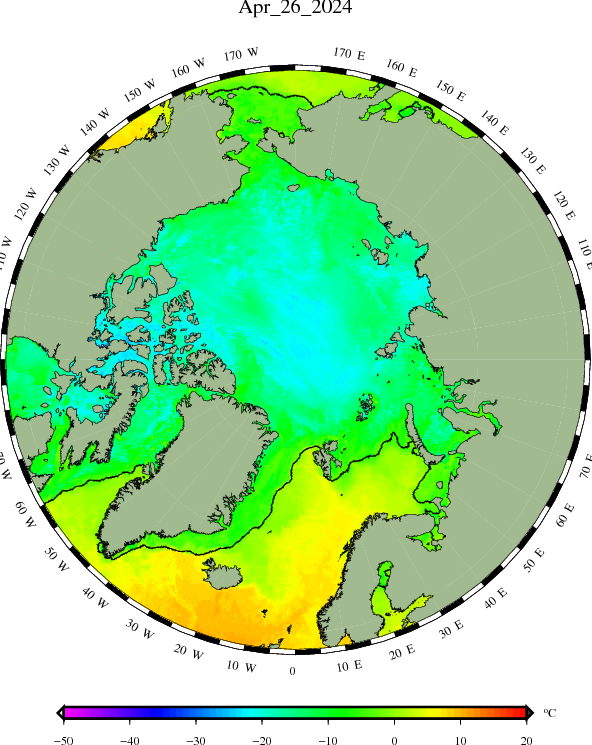Bad news on the Pacific side between the Chukchi and ESS. Warm water is bunched right up against the pack ice. Out by Wrangle Island.
The things blow off the open water along that area of the Pacific side quite a bit this week around the anti-cyclonic flow + low pressure systems that travel into NE Siberia also help bring an Easterly flow off the Bering straight region fetch.
It's not every moment like this. But the ESS is very shallow. This water source is tied to the warm Pacific layer that dives under the arctic fresh top water layer. However in this case

The natural surface current is for the water to travel West to East over the ESS Basin towards the Chukchi.
This wind reversal is like a wall of warm water being pushed into the ice pack. There is no where for it to mix under the ice except with the fresh water layer where it will go to bottom ice melt.
Or thru the ice as it cracks and all that. I think this is part of the great ESS meltdown of 2007 IIRC.
But that doesn't show the heat within the ice pack that the satellite can't pick up properly.

On this graphic I circled in blue areas of the ESS with reporting stations of 1C sst within the ice pack. This is not uncommon they are relatively close to the shore. But not all of them. Another potential forming warm pool is around wrangle Island.
The DMI graphic is updated an hour or two ago. The black and white one is a day old. New one is normally out by now.

The Red arrow points to the strip of warm water you see on the DMI chart.
You can also see the ice along the shore is breaking/opening up. Warm water will be able to flow under/thru/over this area quickly really tearing the ice up.

Then we combine the 8 day weekly mean of the GFS showing above normal temps and 0C+ average + 500w/m2 solar potential.
I think not just the ESS but the entire Pacific side basin is going to get funky. As well as the Atlantic side/Laptev/Kara.
North of GIS/NA is pretty warm who knows how much surface melt will go on there.
But in terms of areas of potential melt out. Insitu melt is going to be paramount under the kind of weather we are under.
The melting process is a positive feedback and major melt can happen fast. Most of the Pacific/Atlantic basin side is well under 2M now.
Hell most of the arctic is.
Some of that is already melted. But most melts from mid July-late August.
The ESS hasn't been looking to hot. If the ice here melts out fast the water depth is 20-30M over a large large area. The faster this region melts the faster it can warm up and be a staging point for invasions of the ice further North.
These are the little things I love to watch unfold and see their impact.
